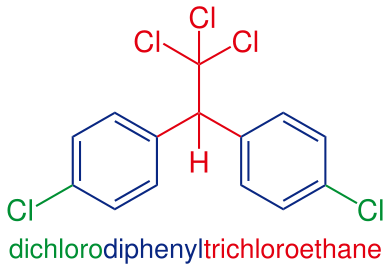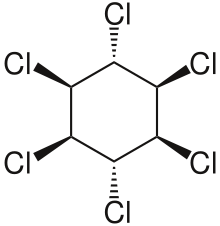Pesticides application in ending food crisis, and it effects on the environment.
Hi everyone, I Hope we are steeming on. I want to discuss a topic I believe will enlighten us more on ..........Okay, let look at the preamble.
Taking a good look at current state of food crises in the world caused by various crises, one can not but quickly think on how to possibly reduce the crises.
In 2017 alone, a report indicated 108 million people in 48 countries that experience severe food crises. This was not because there was no land for cultivation, but because of one crises or the other, many of the several millions were displaced from their land.
To abate this, government and non-governmental organizations all over the globe has to source for food globally to meet this demand for food.
This in turn leads to many farmers trying to supply more food to meet the demand.
In tackling food crisis, everyone involved from various angle would try to give their best and remove hindrances on their way. One of the ways employed to overcome the menace of food crises is the use of pesticides to deal with competitors while the "food" is still on the farm.
Though the use of pesticides is good for maximum yield of farm produce, but it side effects should also be noted.
We know that food supplies nutrients for the body to utilize.But what about when the food we are consuming is already laden with persistent organic pollutants that found their way in to the food, while farmers are trying to get rid of pest generally?.
No farmer who knows that he is important to the society would like to cultivate his/her farm and left it to be destroyed by some bad folks called insects, or will allow some green competitors called weeds to sap away all soil nutrient.That is why our friend the farmer would want to apply some chemicals termed organic pesticides.
The insect pests and plant pests, actually contribute to food crises in the globe today. Insect pests does so by destroying crop on the farm while,plant pests (weeds) does so by limiting the space available to plant and competing with cultivated crop for the limited nutrient available.
Having established the fact that pests generally competes with crop and contribute to food crises, lets now look at control means applied by our dear farmers, and the possible impact of such means on the ecosystem.
Generally, farmers utilize pesticides to control pest which in turn makes food available there by reducing famine. Pesticides are chemicals or substances that are meant to target and destroy pest in the farm.
This term pesticides comprises of the classifications given here: herbicides (these are pesticides that target weeds generally), insecticides (target insects), some of the insecticides may include those chemicals that regulate insect growth, those that irritate insects, called insects repellent. Other pesticides include bactericide(bacteria destroyer), antimicrobial, disinfectant, fungicide (target fungi alone.) and many more.
However, commonly used of the pesticides are the herbicides, which take up to 80% of all the pesticides mentioned.
The three major classification of pesticides are listed here
°Classification based on mode of action
°Classification based on target organisms
°Classification based on chemical composition.
I will start with the last classification, and we will also look into the impact of these pesticides on crop and on the food chain generally.
Classification based on chemical composition:
While classifying pesticides under this category, the chemical properties of the active ingredients is important to be noted.
This classification gives enlightment on the effectiveness, physical and chemical properties of such pesticides.
This knowledge of the chemical properties of the pesticides is required in the form in which the pesticides is applied, precautionary measure to be taken, while applying it, and the amount of such pesticides to be applied.
Therefore, based on this knowledge and chemical classification, pesticides have been categorised into four main groups which are; organochlorine, organophosphorus, carbamates, pyrethrin and pyrethroids.
The organochlorine pesticides consist of 5 to 6 chlorine atoms in their skeleton. They were the first known organic synthesized pesticides used for the control of pest in agriculture also in public health history.
Most organochlorine were used as insecticides for the control of insect. The major setback in it's application is the persistence nature they possess, this means that they have long term residual impact on the ecosystem. This is because they resist degradation.
In insect, they function as nervous system disruptors, leading to spasm and immobility of insects which then leads to their death. Good examples of organochlorine pesticides comprises the following:
1:Dichlorodiphenyltrichloroethane (DDT)
2:Lindane
3: Endosulfan
4:Aldrin
5:Dieldrin
6: Chlordane
I will start the discussion on organochlorine pesticides with DDT
Dichlorodiphenyltrichloroethane (DDT)
DDTBy Leyo - Own work, Public Domain
DDT is highly water resistant (hydrophobic), but highly soluble in almost all organic solvent, fats and oil. This compound doesn't occur in nature, and is synthesized by a method refer to as Friedel–Crafts hydroxyalkylation reaction. DDT has been under trade name such as Dinocide, Ixodex, Neocidol, and many more.
Environmental effect of DDT:
This compound is a persistent organic pollutants, it was in this veiw that the American government and other nation of the world ban it's use. Though effective in pest control, but it is deleterious to the entire ecosystem due to it's persistence.
It is readily taken on soils and sediments, which function both as sinks and as reservoir. Condition determine it's half life, but it can have half life between 22 years to 30years.
DDT pathway of loss and breakdown include runoff, vaporization of dissolved part, photolysis (break down by light), and aerobic and anaerobic biodegradation.
Since DDT is hydrophobic, DDT and it's metabolite in aquatic ecosystem are absorbed by water organisms, while some are held on the surface of suspended particles, thereby leaving minimal amount of DDT dissolved in water.The metabolitess which includes Dichlorodiphenyldichloroethylene (DDE) and
Dichlorodiphenyldichloroethane (DDD), are also persistent and are similar in properties with DDT.
Breaking down of DDT to DDE and DDD:By Leyo - Own work, Public Domain,
DDT and it's metabolite moved from warmer regions through a phenomenon known as global distillation to the Arctic, where they now accumulate in that regions food web.
Fat soluble properties of DDT makes it to accumulate in predatory birds. It can also be found to accumulate in marine organisms such as crayfish, shrimp, daphnids and many more.
DDT and it's metabolite are stored in the fat tissue of animal body, and are resistant to metabolism meaning that they can't be broken down at all.They have half life between 6 to 10 years in human body system.
Result show that in 2005 alone, these chemicals were detected in human blood samples, when a government agency in the United States conducted a test on them.
These chemicals are been absorbed and become part of the food chain.
Lindane
Lindane:By Leyo - Own work, Public Domain,
. Lindane is another organochlorine pesticides which is toxic to the neural spine, because it hamper with GABA neurotransmitter role by relating with the GABAA receptor-chloride channel complex at the picrotoxin binding sites (Sorry for some of those terms if they sound ambiguous to you).
The effect of Lindane in human system ranges from nervous system to liver, kidney and it's also carcinogenic.This compound is known to be hazardous moderately.
Environmental effect of Lindane
This compound also have persistent property in the environment, it moved over a long distance by natural means such as global distillation, and it can also accumulate in the food chains, however, it's quickly eliminated when there is no more exposure to it.
Modern way of producing it comprise, the treatment and transformation of waste isomers to less toxic molecules.This method is refer to as "cracking"
Endosulfan
Endosulfan is an insecticide used all over the globe to control the infestation of whiteflies, leafhoppers, cabbage worms.As a result of Endosulfan special mode of action, it plays an important role in resisting pests, but because of lack of specificity, it does not only destroy the pests, but also destroy the productive insects, though less injurious to honey bees.
Endosulfan is obtained from Diels-Alder reaction of hexachlorocyclopentadiene, alongside cis-butene-1,4-diol, the adduct of the reaction then react with thionyl chloride. Endosulfan chemically resemble Aldrin, Chlordane.
It is a mixture of stereoisomers selected α and β. α- and β- Endosulfan are arrangement of the teravalent sulfur.α-Endosulfan is more stable thermodynamically than β-endosulfan, so β-endosulfan is converted to the more stable form of α-Endosulfan .
Environmental effect of Endosulfan.
Endosulfan is a predominant environmental pollutant. The compound is semivolatile and resist degradation in the environment.This chemical can travel a great distance from the point source, such if it is applied in point A, it can travel several distance to point B. It readily contaminate air, and water. This chemical have been found in far distance such as
Arctic Ocean, and Antarctic atmosphere too!!
It's amazing also that Endosulfan was detected in dust form blown over to the Caribbean from Sahara Desert after the dust cross over the Atlantic. Endosulfan has been recorded as one of the most copious organochlorine pesticides present in the atmosphere.
Summary
In this post, I discussed about food crisis in the world. I discussed about the collective role of various agencies both government and non-governmental in addressing the crises. Because everyone is looking for the solution, we applied pesticides to deal with pest which could have worsened the crises if care was not taken.
In the light of the use of pesticides, I discussed about the environmental impact of pesticides.
In the next post, I will continue from where I stopped.
Thanks for reading this post. Don't forget to leave a comment behind and probably your own view of the topic.
You can as well join steemSTEM community on the discord if you haven't join before. You can do so by clicking on steemstem discord




I think DDT should be banned. Imagine twenty-something years plus side effects. I'm a sceptic when it comes to using of pesticide as they seem to hurt the environment.
Yes sir.You are absolutely correct, some nation of the world have banned it use. But some third world countries are still using it.
all the pesticides are more or less toxic. DDT is one of the worst. I have read extensively about it when writing about Glyphosate and GMO's, last month.
Congratulations @steepup! You have completed some achievement on Steemit and have been rewarded with new badge(s) :
Click on any badge to view your own Board of Honor on SteemitBoard.
To support your work, I also upvoted your post!
For more information about SteemitBoard, click here
If you no longer want to receive notifications, reply to this comment with the word
STOPReading through your post, taking from it what I can--not trained in science but occasionally venture into the field. Recognized Lindane as a treatment commonly prescribedto children for lice in the US! It's a little bit like the farmer with a problem: short-term solution for a long-term, big headache ("Endosulfan was detected in dust form blown over to the Caribbean from Sahara Desert after the dust cross over the Atlantic"!). Thanks for a clear analysis of commonly used pesticides.
You are welcome. I like your comment. Up tilll now many Nations of the world still use these chemicals, They only think about the immediate solution it provide, but ignore it long term impact on the environment. Thanks for dropping your comment @agmoore
Thank you!
Quite nice. Welldone my good friend @steepup
Pesticide has proven very effective in improving yield in recent years but the environmental effects after-use remains a downside
I learnt some chemical structures here too, Well done
Thanks @mrbreezwrites, pesticides really increase farm yield, but left indelible trail behind.
You're welcomed
Even its acronym "DDT" sounds menacing. Its been proven overtime that any bio-chemical used for any form of agricultural purpose that doesn't degrade naturally is definite bad. And truly this DDT is ranking high on the bad chemical list. Nice expose on its effects on our environment @steepup
Thanks @rickie ,even when DDT degrade to it's metabolites, the two metabolites are also dangerous to the environment. Thanks for stopping by 😘
Great post .!
Thanks great comment!!!
This is the hot topic nowadays... Start with organic farming need of the hour
I love the approach you have given the writeup. It's really good for us to know what problems we are facing and then the possible solution. But we also have to have be aware of the possible side effects of such approach in order to be able to exercise control and strike a balance.
Well done sir!
Thanks, we should weigh our decisions to every approach.
Thanks as well.
When talking about ending the food crisis, you should also want to cover the GMO's as they are currently the only real option, although I don't have definite info if it's safer or not, Glyphosate is after all, just another pesticide. I have written about it, but there are many other things just waiting to be said. @sco had another piece on it at the time.
Well done!
Thanks @alexdory for stopping by, there are various types of pesticides based on chemical composition, apart from organochlorine, we still have organophosphorus pesticides, which will also be discussed. As touching GMO(genetically modified organisms), I don't plan to cover it in this post. Thanks for stopping by.
I will put you on my future read shortlist :D
I will retire from my IT job in about 10 years and start my own organic farm. I am targeting BIO and Green markets, so no pesticides for me, if I can make a living like this.
Glad to hear that. Going green will help our climate stabilize. And having right attitude towards farming will reduce food crisis. 👍
That was a wonderful blog @steepup, thank you very much for your efforts!
It's pretty sad that we have to use all those organochlorine pesticides in order to maximize profit and catch up with competition. I think we should start caring about the environment a lot more and it needs to happen right now.
Oh by the way thank you for providing information regarding the effects of DDT, Lindane & Endosulfan. Unfortunately it all ends up in our water supply and oceans, which is very dangerous and has to be taken into consideration.
Keep up the great work!
Thanks @lordneroo for stopping by. You can't believe that the most alarming thing about these compound is that even after one stop it application ,the effect of the used chemicals still linger after several years. You can watch out for the next part of the post. Thanks my Lord😁
Thanks for your response and the information!
I will be sure to follow your next blogs!
Stay awesome!
Okay, thanks